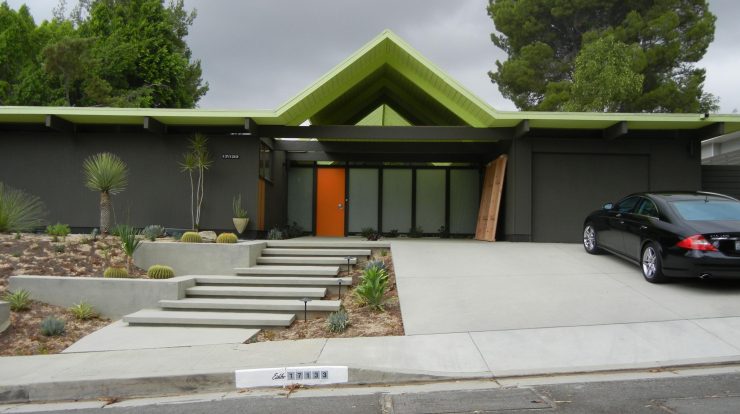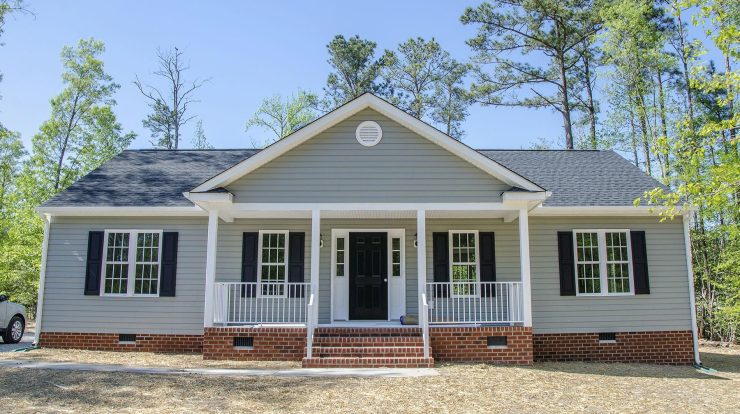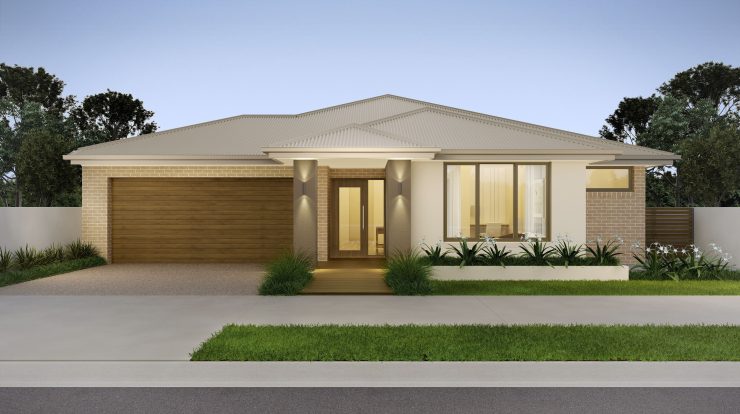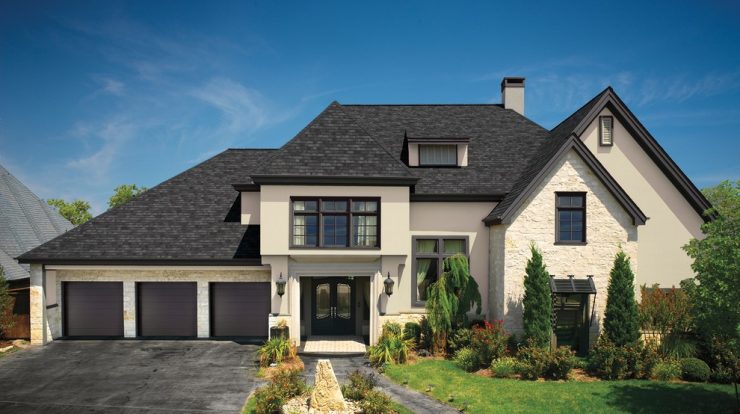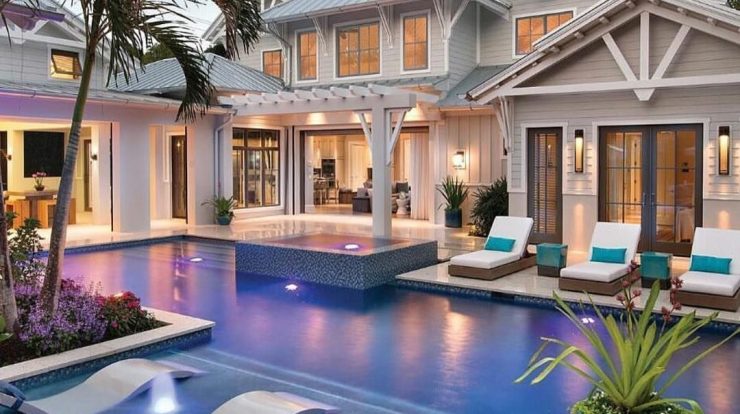Large minimalist white two-story stucco exterior home takes center stage in this captivating overview. Discover the architectural style, size, and unique elements that make this home stand out. Explore the impact of a minimalist design and the advantages of a two-story layout.
Learn about the use of stucco as an exterior finish and the importance of landscaping. Get ready to be inspired by this stunning home.
Description of the home: Large Minimalist White Two-story Stucco Exterior Home
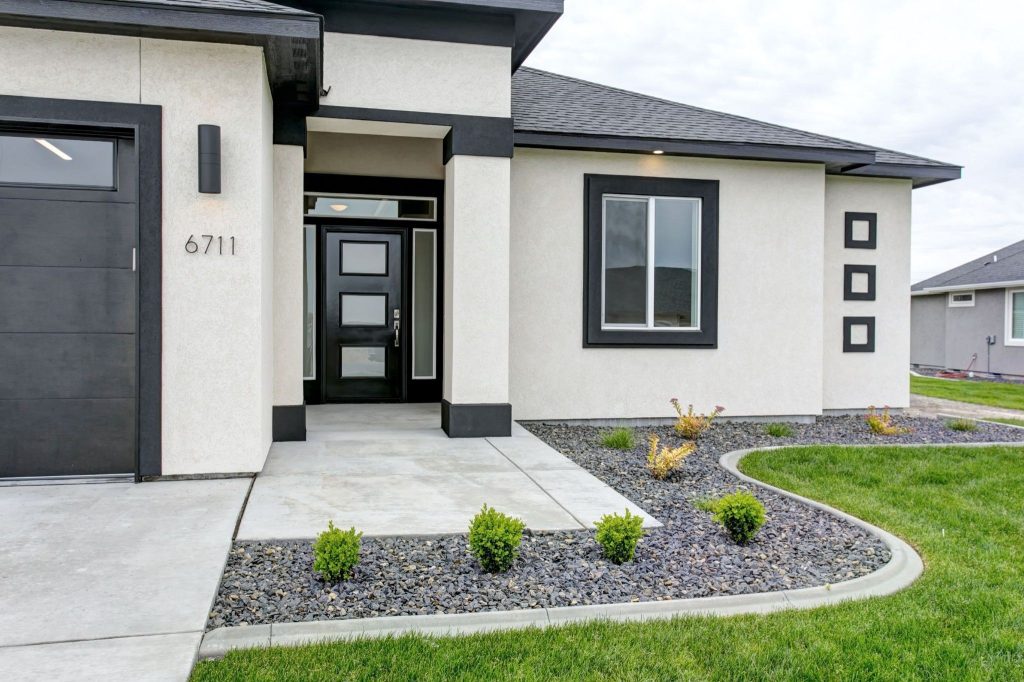
The large minimalist white two-story stucco exterior home is a stunning example of modern architecture. Its clean lines, sleek design, and minimalistic approach create a visually appealing and contemporary aesthetic.
The architectural style of the home can be described as modern minimalist. The exterior features a smooth white stucco finish, which adds a touch of elegance and sophistication. The straight lines and geometric shapes create a sense of simplicity and harmony.
With its two-story layout, the home offers ample space for comfortable living. The first floor consists of a spacious living area, a modern kitchen, a dining area, and a guest bathroom. The second floor features the bedrooms and bathrooms, providing privacy and tranquility.
The construction of the home utilizes high-quality materials to ensure durability and longevity. The stucco exterior not only provides a sleek and modern look but also offers weather resistance and insulation. The large windows throughout the home allow for an abundance of natural light, creating a bright and airy atmosphere.
One standout element of the home’s exterior is the minimalist landscaping. The clean and simple design complements the overall aesthetic of the home and enhances its curb appeal. The use of native plants and well-maintained walkways adds a touch of natural beauty to the property.
Two-story design
A two-story design for a home offers several advantages that make it a popular choice for homeowners.
Compared to single-story or multi-story options, a two-story design maximizes the use of space on a smaller footprint. This is particularly beneficial for homeowners with limited land area. By building upwards instead of outwards, a two-story home allows for a larger living area while preserving outdoor space for gardens, yards, or other purposes.
The two-story layout also provides flexibility in accommodating different living areas. The ground floor can be dedicated to communal spaces such as the living room, dining area, and kitchen, while the upper floor can house private spaces like bedrooms and bathrooms.
This separation allows for better privacy and noise control, especially in households with multiple occupants or families with children.
One unique architectural element specific to the home’s two-story design is the staircase. The staircase not only provides functional access between floors but can also serve as an attractive focal point or design feature. It can be designed with various materials, such as wood or metal, and can be customized to match the overall aesthetic of the home.
However, it’s important to note that there are also challenges and drawbacks associated with a two-story home. Maintenance and cleaning can be more labor-intensive, especially when it comes to cleaning windows or accessing higher areas of the home. Additionally, accessibility can be an issue for individuals with mobility constraints or disabilities.
In these cases, modifications such as installing elevators or ramps may be necessary.
Minimalist design principles
Minimalist design in architecture is a style that focuses on simplicity, clean lines, and the absence of unnecessary ornamentation. It is characterized by a reduction of elements to their essential form and function, emphasizing the use of space, light, and materials.
The home’s exterior incorporates minimalist principles through its large, white stucco facade and simple geometric shapes. The two-story design features clean lines and a symmetrical composition, creating a sense of balance and harmony. The lack of decorative elements or excessive detailing further emphasizes the minimalist aesthetic.
Comparison with other architectural styles, Large minimalist white two-story stucco exterior home
Minimalist design stands in contrast to other architectural styles that may be more ornate or elaborate. For example, traditional architecture often features intricate detailing, decorative moldings, and ornamental elements. In contrast, minimalist design embraces simplicity and avoids unnecessary embellishments.
Modernist architecture, on the other hand, shares some similarities with minimalist design, as both styles prioritize clean lines and simplicity. However, modernist design may incorporate more experimental forms and materials, while minimalist design tends to be more restrained and focused on essential elements.
Key elements of the home’s minimalist aesthetic
The key elements that contribute to the home’s minimalist aesthetic include:
- Large, white stucco exterior: The use of a monochromatic color palette and stucco material creates a sleek and uniform appearance.
- Symmetrical composition: The balanced arrangement of windows, doors, and architectural elements enhances the sense of order and simplicity.
- Clean lines: The absence of ornate detailing and the emphasis on straight lines and geometric shapes create a minimalist visual language.
- Minimal landscaping: The exterior design is complemented by a simple and low-maintenance landscaping scheme, further enhancing the minimalist aesthetic.
Tips for achieving a minimalist design
To achieve a minimalist design, consider the following tips:
- Simplify the color palette: Stick to a limited range of neutral colors, such as white, gray, and black, to create a clean and cohesive look.
- Focus on clean lines and geometric shapes: Avoid excessive detailing and opt for simple, straight lines and geometric forms.
- Declutter and prioritize functionality: Remove unnecessary objects and prioritize the functionality of each element in the space.
- Maximize natural light: Incorporate large windows and open spaces to maximize natural light, creating a bright and airy atmosphere.
- Choose high-quality materials: Select materials that are durable, timeless, and of high quality to enhance the minimalist aesthetic and ensure longevity.
Stucco as an exterior finish

Stucco is a popular choice for exterior finishes due to its durability, low maintenance requirements, and versatile design options. It is a type of cement-based plaster that is applied to the exterior walls of a home, creating a smooth and seamless finish.Stucco
offers several benefits when used as an exterior finish. One of the main advantages is its durability. Stucco is highly resistant to weather elements such as rain, wind, and sunlight. It does not rot or warp like wood siding, and it is not prone to cracks and chips like brick or stone.
This makes stucco a long-lasting option that can withstand the test of time.Another benefit of stucco is its low maintenance requirements. Unlike other exterior finishes that may require regular painting or staining, stucco does not need to be repainted frequently.
It can be cleaned easily with water and mild detergent, keeping its appearance fresh and vibrant for years to come. Additionally, stucco is resistant to pests such as termites, further reducing the need for maintenance.When comparing stucco with other common exterior finishes such as brick or siding, stucco offers a more versatile design aesthetic.
It can be applied in a variety of textures and colors, allowing homeowners to customize the look of their home. Stucco can also be shaped and molded into different architectural details, giving the home a unique and visually appealing appearance.However,
there are some considerations and precautions to keep in mind when using stucco on a large home. Firstly, it is important to ensure that the stucco is applied correctly by a professional contractor. Improper installation can lead to cracks, water damage, and other issues.
Additionally, large homes may require additional reinforcement and maintenance to prevent cracking due to settlement or structural movement.To maintain a stucco exterior, regular inspections are recommended to check for any signs of damage or wear. Any cracks or chips should be repaired promptly to prevent water infiltration.
Cleaning the stucco periodically with a gentle pressure wash can help remove dirt and debris, keeping it looking fresh.Overall, stucco is a popular choice for exterior finishes due to its durability, low maintenance requirements, and versatile design options. By understanding the benefits and considerations of using stucco on a large home, homeowners can make an informed decision about this exterior finish option.
Exterior landscaping and surrounding environment
Exterior landscaping plays a crucial role in complementing the home’s exterior and creating a harmonious overall aesthetic. It not only enhances the visual appeal of the property but also adds to its functionality and value. When it comes to a large minimalist white two-story stucco exterior home, there are certain landscaping elements that can enhance its minimalist design and create a cohesive look.
The ideal landscaping elements for a minimalist design
Incorporating the following elements can enhance the minimalist design of the home:
- Simplicity: Keep the landscape design simple and uncluttered, with clean lines and minimal ornamentation.
- Open spaces: Emphasize open spaces to create a sense of expansiveness and tranquility.
- Neutral colors: Choose a color palette that complements the white stucco exterior, such as shades of gray, green, or muted earth tones.
- Low-maintenance plants: Opt for plants that require minimal upkeep and fit well with the minimalist aesthetic, such as ornamental grasses, succulents, or evergreen shrubs.
- Functional features: Incorporate functional outdoor features, such as a patio, seating area, or pathway, that serve a purpose while maintaining the minimalist design principles.
The role of the surrounding environment in the overall aesthetic
The surrounding environment plays a significant role in shaping the overall aesthetic of the home. Factors such as the climate, topography, and existing vegetation can influence the landscaping choices:
- Climate: Consider the climate of the area when selecting plants and outdoor features. Choose plants that are well-suited to the local climate to ensure their longevity and vitality.
- Topography: Take advantage of the natural contours and slopes of the land to create visual interest and incorporate elements that harmonize with the home’s design.
- Existing vegetation: Incorporate existing trees, shrubs, or other vegetation into the landscape design to maintain a cohesive look with the surrounding environment.
Tips for selecting plants and outdoor features that harmonize with the home
When selecting plants and outdoor features for a large minimalist white two-story stucco exterior home, consider the following tips:
- Research and consult with a professional landscaper to identify plants that thrive in the local climate and require minimal maintenance.
- Choose plants with a sleek and simple appearance, such as slender grasses or sculptural succulents, to complement the minimalist design.
- Consider the scale and proportion of the plants in relation to the size of the home. Avoid overcrowding or overpowering the exterior with oversized plants.
- Incorporate outdoor features that are functional and align with the minimalist aesthetic, such as a pergola, minimalist fountain, or geometric-shaped seating area.
Challenges and considerations in designing the exterior landscape
Designing the exterior landscape for a large minimalist white two-story stucco exterior home may come with its own challenges and considerations:
- Maintaining simplicity: Striking the right balance between minimalism and functionality can be challenging. Avoid overcomplicating the design and ensure that the landscape elements do not overshadow the home’s architectural features.
- Integration with the architecture: The landscape design should seamlessly integrate with the architectural style of the home. Consider elements such as the roofline, windows, and overall form to create a cohesive look.
- Water management: Develop a water management plan to ensure proper drainage and irrigation, especially in regions with varying climates or limited water resources.
- Budget constraints: Landscaping can be expensive. Consider your budget and prioritize essential elements that align with the minimalist design principles and long-term maintenance.
Final Thoughts

In summary, the large minimalist white two-story stucco exterior home offers a visually appealing and functional design. With its clean lines, minimalist aesthetic, and thoughtful layout, this home is a true masterpiece. The use of stucco as an exterior finish adds durability and style, while the surrounding landscaping complements the overall aesthetic.
Whether you’re considering a minimalist design or simply appreciate architectural beauty, this home is sure to inspire.

